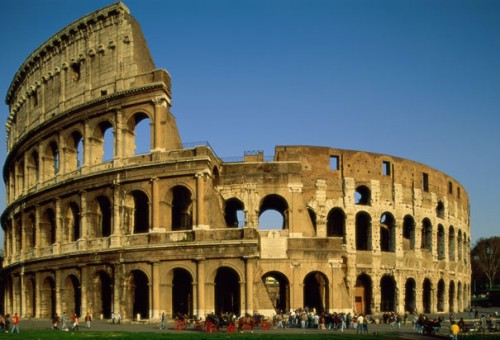Roman architecture achieved new heights during their heydays but the most significant among them were the use of domes and arches. This form of architecture can be successfully implemented in area like restricted path choices, removal of bottle necks, eliminating sharp corners and large sanitary areas. Roman architecture, as a subject, can be broken down into a number of heads so as to explain it clearly.

External Influences
Roman architecture was influenced by a lot of architectural styles apart from that of the Greeks. Contributions were coming in from all possible quarters that include the Etruscans, Egyptians, Judaeans, Persians, etc.
Construction and building materials
Availability of building materials and climatic conditions played a big role in influencing Roman architecture. It is very common for a north European house to employ a lot of timber and ask for a steep sided roof so as to support the snowfalls. Whereas, a south- European might be choosing a thick stone so as to maintain a steady temperature and flow of air. Roman consciousness was utilitarian and pragmatic and so was their perception of architecture and building.
Public buildings and temples
The Greeks specialised in producing some marvellous temples and art, while the Romans increased them to the point of almost diluting their individual importance. The Greeks’ styling of the temples was embraced by the Romans and later turned them inside-out. The basilicas were conceived initially as gigantic “malls” which were later transformed into ideal structures of Christianity. The Romans diluted the “without” concept of the Greek gods and switched it with a building of worship, placing the god “within”.
Innovations
The Romans, no doubt, were excellent engineers. Destructive fires within the city led to the innovation of pozzolanic concrete. Concrete’s great strength also allowed them to build enormous structures, such as the Pantheon. Vaulted octagonal zoom, like that of the Domus Aurea was another innovation that emerged during the Roman era. Apartment buildings came into picture when the empire was at its peak. Other innovations include baths, aqueducts, circus, etc.
Mysticism and Propaganda
Mystical elements influenced Roman architecture heavily. One such example is the Pantheon that got influenced by the rising Sun and that of Augustus’ birth date.
Nero’s Golden House
Emperor Nero built Domus Aurea as the focal point of his extraordinary vision of Roman universe and culture.
Impact of Nero on Roman architecture
The artistic flamboyance of Nero, along with his love of show, grandeur and wealth influenced Roman architecture and urban development to a great extent.
Commemorative columns
These may not be a Roman invention but were modified by them limitlessly.
The Triumphal Arch
This one is regarded to be the most significant contribution by the Romans to architecture and art. It is massive, monumental and durable besides being constructed mainly to announce the arrival of a conqueror.
Game-changing Roman architects
Roman architecture achieved great heights under the brilliant watch of some great architects, with the most influential among them being Vitruvius, Apollodorus, Sextus Julius Frontinus and Cissonius.

COMMENTS
[…] History of Roman Architecture […]